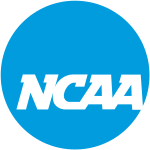The NCAA transfer portal is a National Collegiate Athletic Association (NCAA) application,[1][2] database,[3] and compliance tool[4] launched on October 15, 2018,[4] to manage and facilitate the process for student athletes seeking to transfer between member institutions. The transfer portal permits student athletes to place their name in an online database declaring their desire to transfer.[5] Athletes enter the portal by informing their current school of their desire to transfer; the school then has two business days to enter the athlete's name in the database.[5] Once an athlete's name is entered in the database, coaches and staff from other schools are permitted to make contact with the athlete to inquire about their interest in visiting the campus and accepting a scholarship.[6] The transfer portal is intended to bring greater transparency to the transfer process and to enable student athletes to publicize their desire to transfer.[4] The transfer portal is an NCAA-wide database, covering transfers in all three NCAA divisions, although most media coverage of the transfer portal involves its use in the top-level Division I.
 | |
 | |
Type of site | Student athlete database Compliance tool |
|---|---|
| Owner | National Collegiate Athletic Association |
| Services | Student athlete college transfer |
| URL | https://apps.ncaa.org |
| Registration | Access limited to NCAA members |
| Launched | October 15, 2018 |
New regulations were adopted in 2021 allowing student-athletes in Division I football, men's and women's basketball, men's ice hockey, and baseball to change schools using the portal once without sitting out a year after the transfer. This regulation placed all NCAA sports under the same transfer rules, as the so-called "one-time transfer" rule had long been in place for all other D-I sports, as well as all sports in Divisions II and III.[7][8]
Transfer windows
On August 31, 2022, the Division I board adopted a series of changes to transfer rules, introducing the concept of transfer windows, similar to those used in professional soccer worldwide. Student-athletes who wish to take advantage of the one-time transfer rule now must, under normal circumstances, enter the portal within a designated window for their sport. These windows are slightly different for each NCAA sport, but are broadly grouped by the NCAA's three athletic "seasons".[9]
- Fall sports[a] – A 45-day winter window opening the day after championship selections are made in that sport, and a spring window from May 1–15. According to the NCAA, "reasonable accommodations" would be made for participants in football's FBS and FCS championship games (respectively the College Football Playoff National Championship and Division I Football Championship Game[b]), both of which take place in early January. More specifically, participants in those games have a 14-day window opening on the day after the championship game,[10] as well as the spring window.
- Winter sports[c] – A 60-day window opening the day after championship selections are made in that sport.
- Spring sports[d] – A winter window from December 1–15, and a 45-day spring window opening the day after championship selections are made in that sport.
- For sports included in the NCAA Emerging Sports for Women program,[e] transfer windows are the same as those for fully recognized NCAA sports. As with fully recognized NCAA sports, transfer windows linked to championship events open on the day after selections are made for the generally recognized championship events in emerging sports.[10]
Student-athletes whose athletic aid is reduced, canceled, or not renewed by their current school, as well as those affected by a university's elimination of a sports team, may enter the transfer portal at any time without penalty. A slightly different exception applies to those undergoing a head coaching change; student-athletes so affected can enter the portal within 30 days of the change (either departure or hiring).[9]
Less than a month after transfer windows were adopted, the Division I Council adopted a change that affected only graduate transfers. Student-athletes who are set to graduate with remaining athletic eligibility, and plan to continue competition as postgraduate students, were exempt from transfer windows. They could enter the portal at any time during the academic year, and were not subject to the standard deadlines of May 1 for fall and winter sports and July 1 for spring sports.[11] In April 2024, graduate transfers became subject to the same deadlines as all other transfer students. This change did not affect windows for student-athletes affected by a head coaching change, a loss of athletic aid, or the discontinuation of a team.[12]
Because the Ivy League allows neither redshirting nor athletic participation by graduate students,[f] athletes at its member schools who are set to complete four years of attendance but still have remaining athletic eligibility may enter the portal at any time during their fourth academic year of attendance.[14]